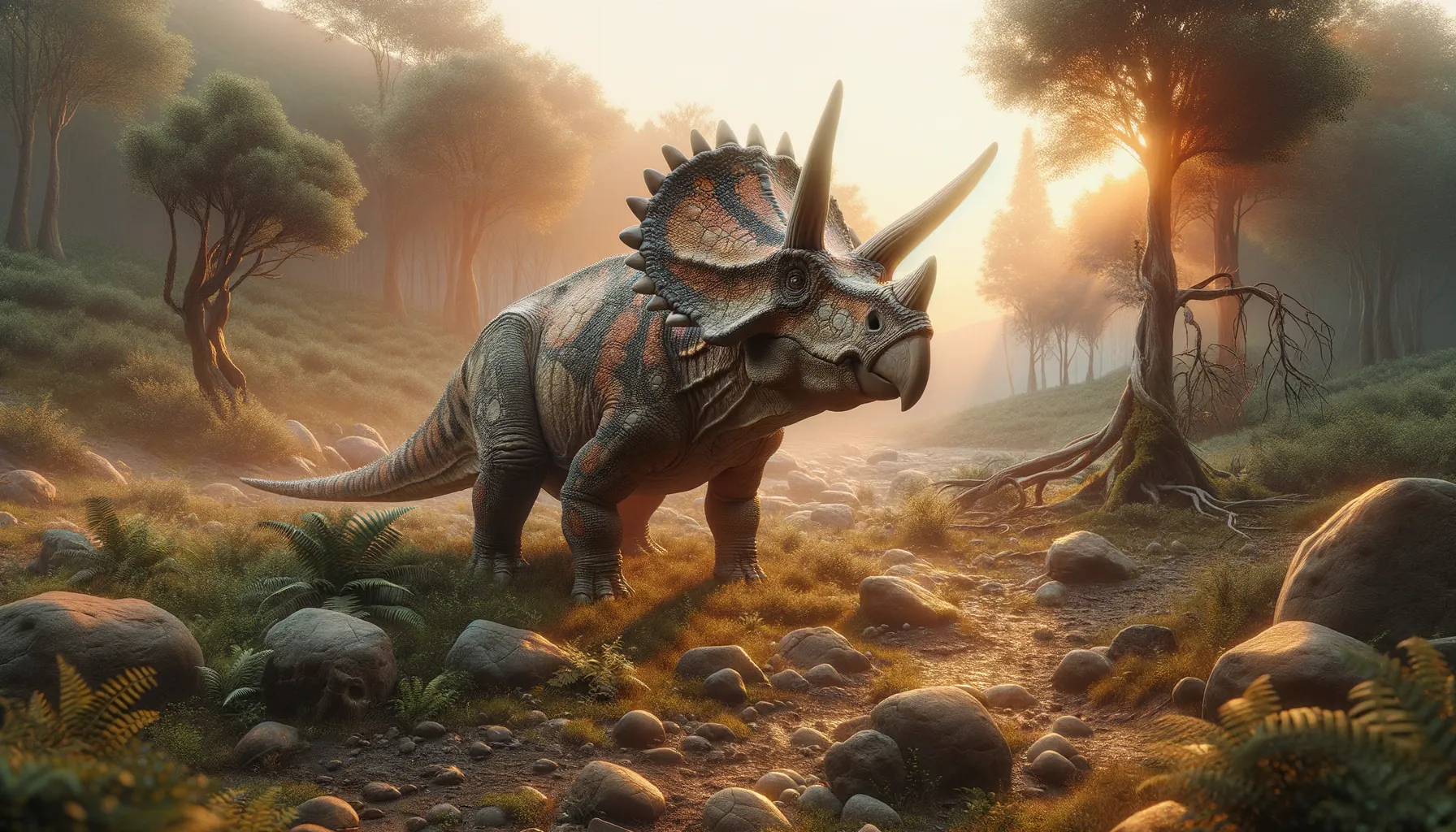
Mosaiceratops
Early steps of ceratopsian evolution unveiled.
Period
Cretaceous
Length
Approximately 1.2 meters long.
Height
Around 0.5 meters at the shoulder.
Weight
About 10-15 kilograms.
Mosaiceratops was a small, herbivorous dinosaur from the Late Cretaceous period. With its compact size and ceratopsian features, it falls into a basic branch of the ceratopsian family tree. Discovered in central China, this dinosaur showcases the diverse evolutionary paths within the ceratopsian group. Its fossils provide insights into the early stages of ceratopsian development and their distribution across ancient ecosystems.
Diet
Mosaiceratops was an herbivore, feeding primarily on low-lying vegetation. Its beak-like mouth would have been well-suited for cropping plants and leaves.
Hunting
As a herbivore, it did not engage in hunting but foraged in groups, exploiting the rich vegetative resources in its environment. It likely moved slowly through foliage to graze.
Environmental challenges
Mosaiceratops lived in a time when changing climates would have influenced plant availability. Competition for resources with other herbivores might have been significant. Natural predators also posed threats, necessitating vigilance and protective adaptations.
Speed
Relatively slow-moving due to its small size.
Lifespan
Estimated to be around 10 to 20 years.
First discovery
Discovered in 2015 in central China.
Fun Facts
- Mosaiceratops was a small dinosaur that lived around 160 million years ago during the Late Jurassic period.
- It was primarily discovered in what is now central China, adding to the rich fossil record of the region.
- Despite its size, Mosaiceratops had a distinctive frill on its head, which is a key feature of ceratopsian dinosaurs.
- The name 'Mosaiceratops' means 'mosaic-horned face,' relating to the patchy pattern of bones seen in its skull structure.
- Unlike its larger relatives like Triceratops, Mosaiceratops was much smaller, roughly the size of a medium dog.
- Mosaiceratops was herbivorous, feeding on a variety of vegetation in its lush environment.
- Its discovery has helped scientists learn more about the early evolution of horned dinosaurs.
Growth and Development
Mosaiceratops was likely born from small eggs, growing steadily through early years. Its development showcased primitive features compared to later ceratopsians. This evolutionary stage indicates adaptation to diverse ecological niches.
Habitat
This dinosaur lived in expansive floodplains, with ample vegetation and water sources. Mild climates and broad landscapes supported its feeding habits. The environment was shared with various other dinosaur species and prehistoric creatures.
Interaction with other species
Mosaiceratops likely coexisted with other small dinosaurs, sharing resources and territory. As a herbivore, it may have formed mixed-species groups to enhance protection against predators. Its interactions were peaceful due to limited competition with meat-eaters.
Natural lifespan
Its natural lifespan was likely between one to two decades.
Reproduction
Mosaiceratops reproduced by laying eggs, likely in safe nesting areas. Parental care, if any, would have been minimal compared to modern birds. Nestled sites helped hatchlings avoid predators and environmental stresses.
Social behaviour
Living in small herds, Mosaiceratops benefited from group dynamics for protection. Social interactions with other members ensured better survival chances. Their structured social behaviour might have included basic communication forms.
Fossil locations
Fossils of Mosaiceratops were primarily found in central China's Gansu Province. These discoveries have contributed significantly to understanding ceratopsian distribution. The area, rich in prehistoric remains, provides important clues about past ecosystems.
